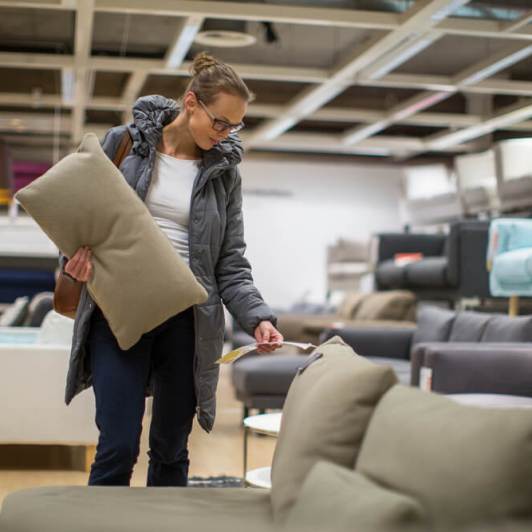Thanksgiving Weekend was a turning point in the battle between traditional retail and pure-play ecommerce. Across all retail, ecommerce surged ahead, as The National Retail Federation estimated that that 108.5 million Americans shopped online over the long weekend versus the 99.1 million who shopped in stores. Last year, shoppers were about even for both channels.
There was a real channel shift at play this Thanksgiving Weekend, as more and more shoppers moved online to avoid busy crowds. Three trends emerged that left retailers who failed to capture these shoppers in the dust:
- Online traffic increased significantly, particularly on mobile.
- Consumers no longer perceive Black Friday as a one-day, in-store event. It’s a week-long sales extravaganza.
- Consumers desire a more personalized shopping experience.
Wayfair succeeded on many of these fronts, driven by sales in “TV stands, rugs and mattresses”. But for furniture, where stores still play a significant role in the shopping process, these trends weren’t a threat to traditional retailers, but a tremendous opportunity to combine robust online growth with store experiences that Wayfair can’t match.
This Thanksgiving, sales across the Blueport Platform proved just how significant that opportunity is. With online revenue increasing upwards of 50% on Black Friday and Thanksgiving Day, our retailers proved that leveraging the right technology will not only capture online sales, but drive increased traffic to stores.
In this blog post, we’ll dig into each of these trends, showing how retailers across the Blueport Platform captured and converted online shoppers to drive omnichannel sales this Thanksgiving Weekend.
1) Online traffic increased significantly, particularly on mobile.
Retailer Response: Fast, seamless and stable responsive ecommerce sites that convert furniture shoppers online and drive traffic to stores.
While the increase in online traffic poses a large opportunity, retailers must have the platform technology to capture and convert those shoppers, whether it is driving the sale online or sending qualified leads to a store.
Leveraging the Blueport Platform designed to sell big-ticket furniture, our retailers were able to generate as much 18% of their total chain sales online. Moreover, online played a large role in driving traffic to stores, as retailers saw as much as 87% of store sales influenced by online.

Mobile drove a significant amount of online growth this holiday with over half of online shoppers using a mobile device—a 76% increase from the year prior. Over the past year, the Blueport Platform has put a tremendous amount of work in optimizing the mobile experience to ensure we’re converting the increased number of shoppers through this channel on major holidays and every day in between. These efforts contributed to an 85% increase in mobile revenue, with smartphones generating 22% of total online revenue.
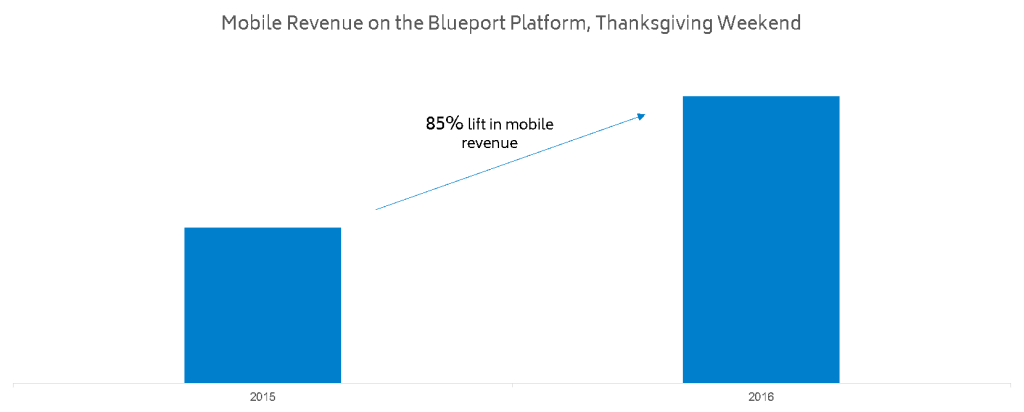
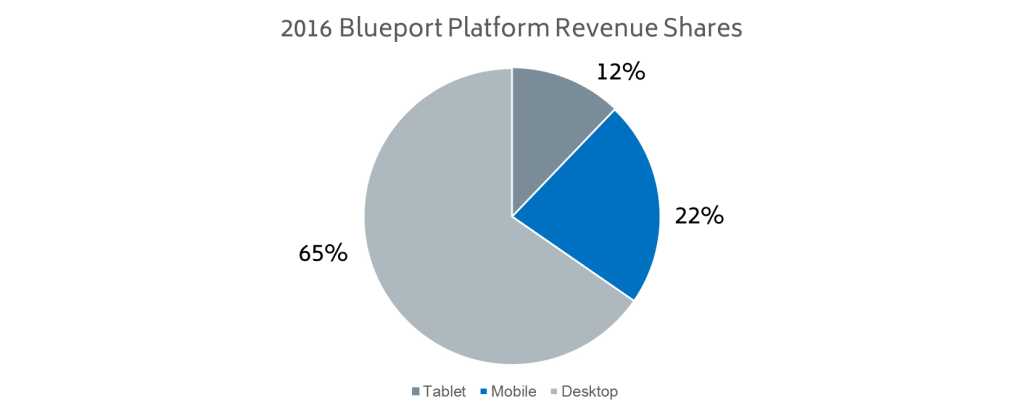
2) Consumers no longer perceive Black Friday as a one-day, in-store event. It’s a week-long sales extravaganza.
Retailer Response: Create a consistent offline-to-online experience throughout the entire sales period, offering store promotions online when stores are closed.
Increasingly, the distinction between Brick & Mortar Friday and Online Monday continues to fade, as shoppers and retailers alike move away from single day promotional periods into a weeklong event. According to Adobe, U.S. online sales continue to spread across the week as sales this year from Thursday to Saturday increased 17.3% to $7.23 billion.
Instead of viewing this as a loss to their stores on Black Friday, retailers across the Blueport Platform leveraged their online channel to work in tandem with stores, ensuring consistency in the online to offline experience. With stellar promotional and marketing execution across channels, Blueport retailers delivered a seamless online to in-store experience while also providing an avenue for shoppers to purchase furniture when stores were closed. Many of our retailers, for example, offered Black Friday deals early Thanksgiving Day, to help accelerate sales.
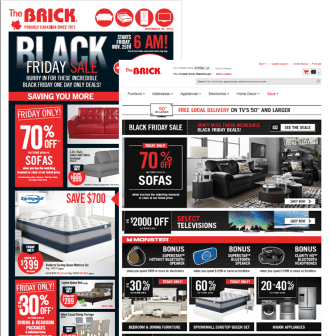
The Brick had consistent promotional messaging online to offline this Black Friday

3) Consumers desire a more personalized shopping experience.
Retailer Response: Leverage knowledge of local shoppers to differentiate the experience from pure-plays.
In today’s competitive environment, it is critical for traditional retailers to use their advantages to compete with pure-plays like Amazon and Wayfair who are targeting a broad range of shoppers. One of the biggest advantages local furniture retailers have is the knowledge of their shoppers in local markets as more and more consumers desire a tailored, personalized experience.
Seeing this need to create more personalized furniture shopping experiences, Blueport launched a personalized recommendations engine. Combining machine-learning technology and traditional merchandising tactics, the Blueport Recommendations Engine delivers a curated, personalized experience for shoppers, while increasing sales online and in stores for retailers.
This past Thanksgiving Weekend, retailers saw a 200% lift in conversion and a 29% increase in average order value for customers who interacted with product recommendations. Additionally, over a quarter of purchases across the weekend can be attributed to shoppers who interacted with product recommendations.
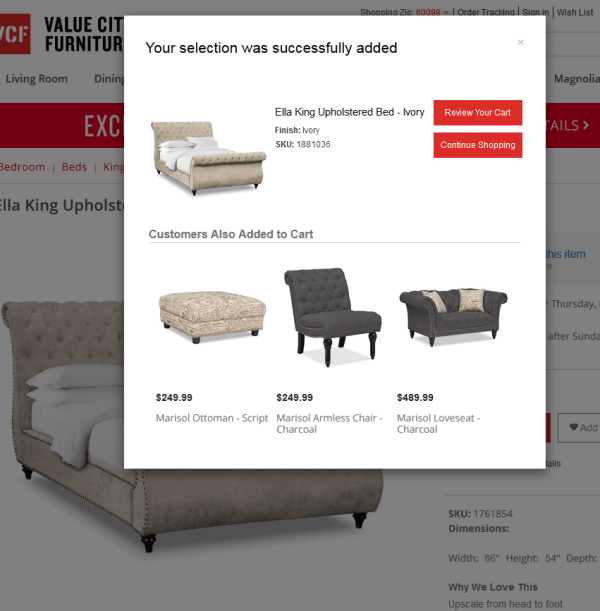
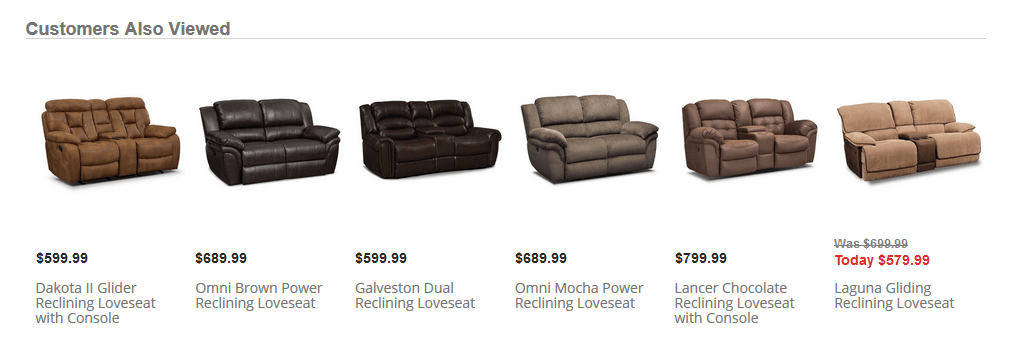
We are thrilled with the results across the platform Thanksgiving Weekend, proving just how significant the opportunity is for traditional retailers in this space. Leveraging learnings from this monumental holiday weekend, we look forward to continuously improving the platform and enabling furniture retailers to capture their massive omnichannel opportunity.


